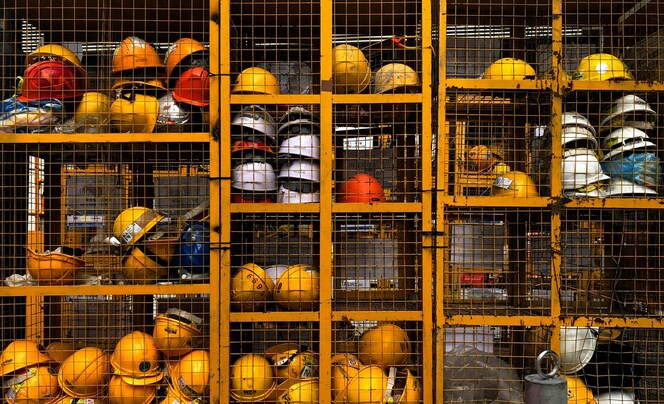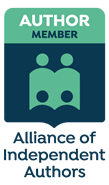|
Photo by Pop & Zebra on Unsplash It seems reasonable to most of us who live in first world countries that each workplace be required to maintain minimum safety standards. However, there seems to be an increasing number of voices in recent years arguing that the free market should dictate everything, including workplace safety. This is often followed by claims that if unsafe working conditions are found, a worker can simply quit and find a new job. This raises the question: Why do we have safety laws in the first place? To answer that, here is a quick overview of the history that brought us to where we are today. Before the industrial revolution, which started in the mid 18th century, there were many small, family-owned shops, producing small amounts of goods. Mass production was uncommon and limited to specific industries. Although accidents did happen back then, they were rarely happening on a large scale and to a large number of people at a time. This changed with the invention of machines and the sudden ability to create products on an industrial scale. Factories sometimes required hundreds of workers to operate these machines, and the key to effective production was to produce as much as possible, in the shortest possible time and with the least amount of money invested. This became a problem for millions of workers worldwide. The first known records go back to 1750 BC Mesopotamia, where some aspects of regulations around safety were implemented by society. Workplace safety as we know it today, however, only began in the 19th century. In England, a safety report in 1784 resulted in the first Factory Act in 1802. It started with a large number of workers in the factory and the nearby village falling sick due to highly transmissible disease. One of the regulations mandated fresh air in the factories, which up until that time had offered little to no air flow. Further accidents and attempts to prevent them forced the Cotton Mills and Factories Act 1819, which forbade kids under 9 from working, and allowed kids younger than 16 to work 12 hours a day. Later, the Labour in Cotton Mills Act 1831 forbade workers younger than 21 from working night shifts. In 1832, to further prevent workplace-related accidents, the workday for workers 18 or younger was shortened to 10 hours. Acts on operating the production machinery had also been introduced that only allowed the machines to be cleaned when they were not running. Cotton mills weren’t the only industry that had to improve worker safety in order to limit accidents and injury. Similar regulations around mining, railroad industry and agriculture were developed. With passing years regulations forbade all children to work in factories, standardized 8 hour work days, allowed labor unions to exist and even regulated the amount of breaks. Each step in this process was preceded by lost lives, pain and mutilation. The Occupational Health and Safety acts that we know today in the US and Canada were created in the 1970s. They put emphasis not only at working conditions, but also on Health and Safety training. Both Sābanto - The Crimson River and Sābanto - The Copper Briar review the working conditions and safety of the working class of an imaginary universe that is not that far from our own. The stories explore what would happen if workplace laws no longer existed, the workers had no one to advocate for them, the working hours were extended as much as possible to increase profits and the life and wellbeing of the workforce no longer matter. I want Sābanto to be a cautionary tale of the pain and suffering that can be inflicted when profits are more important than a human being. Because so many people fought for these laws through hundreds of years and many had paid for them with their health and even lives, as a society we should not try to reverse the process. Sources:
https://safetylineloneworker.com/blog/history-of-workplace-safety https://www.linkedin.com/pulse/brief-history-workplace-health-safety-from-black-ilo https://en.wikipedia.org/wiki/Health_and_Morals_of_Apprentices_Act_1802 https://en.wikipedia.org/wiki/Factory_Acts#:~:text=The%20act%20had%20the%20following,p.m.%20and%20before%205.30%20a.m.
0 Comments
When a mad scientist is put in charge of creating a great new mining machine, the Boneshaker, disaster ensues, beginning with the destruction of Seattle. Soon a toxic gas escapes from the depths of earth and poisons thousands of people, turning them into zombies. In an effort to save lives, walls are hastily erected that keep the gas inside the city.
Years later, Zeke has more questions than answers about the walled city and the disaster. He puts on a gas mask and runs away from home in the hopes of uncovering the truth about his father and the invention he created. Knowing that her son is in danger, Briar follows in an impossible quest to find and rescue Zeke. Boneshaker takes the reader on a fast-paced journey through the ruins of Seattle on a steam-powered airship, through gas-filled streets where zombies roam, and tunnels that are still used by the inhabitants who chose to remain in the condemned city. Although zombie stories are not my first or second choice when selecting a book to read, I think Boneshaker is a well written novel, and anyone who picks it up won't be disappointed. It is a page turner that keeps the reader on the edge of their seat while the mysteries are slowly unraveled. I’d heard of this book some time ago and then it resurfaced recently when it was shortlisted for a major literary prize in Canada. I picked it up early this year and unfortunately, it took me a long time to read it. I had trouble engaging with the story for the most part. I found it difficult to follow where the story was going and what point the author was trying to make. Although the use of fossil fuels and a new civil war were the major themes, they didn’t seem to be what the book was truly about. It follows the life of Sarah T. Chestnut (Sarat for short) who goes through a series of tragic events that start with the death of her father and the beginning of a new civil war in America. Only when I was about 70% in did the premise of the book finally become clear. From that point onward, I was able to finish the rest of the book in a single evening.
Before I get into some of the details with spoilers, I wanted to point out that although the book is rarely categorized as literary fiction, at least as far as my research told me, I would say that’s what it is. It is a carefully crafted story with lots of world-building and attention to detail that at first does not appear to be of crucial importance. A lot is happening, but the meaning of the events, besides being tragic, are not apparent until later, which makes it harder to engage with the story and sympathize with the main character. I give the book 3 out of 5 stars for the topic it raises and the way it is crafted. I would have given it 5 stars if there were a hook at the beginning. Maybe it was too linear with all events happening in sequence. Spoilers Ahead: Sarat goes through a lot in her life and the events of her youth make a significant impression on her. Additionally, this is amplified by the views of the adults around her who push her to choose a certain path. Although these adults believe that the youth will follow in their footsteps, they don't understand how evil it is for children to be involved in the war and pitted against the enemy. They don’t realize they have created a monster. The synopsis below takes the premise of the book into account. The civil war between the North and the South is only a backdrop to the real story. Sarat is too young to understand that her father was killed at the hands of the Southerners, but the years she spent in a refugee camp with her mother and two other siblings has shaped her. The attack from the North was always imminent and the refugees lived under the constant threat of that happening. Sarat learns from adults and local militants how evil the North is and is introduced by her recruiter to what seems like the only reasonable action of fighting the North. When the attack occurs, Sarat is already a teen and she sees the brutality of the war firsthand. Her mother is killed and her brother is shot in the head, suffering severe brain damage. This is when Sarat decides that her recruiter was right. She needs to fight, and she becomes a very successful sniper. Eventually, negotiations bring the divided America closer to peace. This point in the book is when the premise becomes clear. Sarat is against peace because she hasn’t experienced it and is now driven by the hatred of the North that’s been building inside her since early childhood. She says the following to her friend: "All these old men want it to be like it was when they were young. But it'll never be like that again, and they'll never be young again, no matter what they do … But you and I… We're young, and we ain't bound by what they bound by." She can accept peace, but it won't be the old peace where the North and South live together in harmony once again. When Sarat eventually gets captured by the North and tortured in inhumane jail conditions like those in Guantanamo for seven years (be forewarned that it might be disturbing for some to read about) she learns that she was in fact betrayed by her recruiter. Later, the South additionally betrayed her by settling for peace with the North, giving her back her freedom. Sarat cannot accept this new reality and is persuaded to do the unthinkable. Something that would punish both sides. Her mind is made up that the world will never be as it once was. In conclusion, I think the author uses Sarat as a cautionary tale. Although it is adults who start wars, the children and the youth become an integral part of it, caught in the whirlwind of the conflicts. The new generations learn about the war from people they trust, or experience its evil firsthand, and this shapes their view of the world. This causes a perpetual war that is being raged when the new generations, fueled with emotions and beliefs, repeat their ancestors' mistakes and take up arms. It is also important to note that the North-South conflict is being fueled from the outside. It is of interest to another world power for the North and South of the USA to fight with each other in order for that power to thrive. This political twist makes it important to reflect on the internal conflicts of countries and who benefits from them. Being a writer requires a lot of research, and that is not limited to doing content research for the next book. It’s also important to know what other writers in the genre are writing. I stumbled on The Windup Girl by Paolo Bacigalupi and the premise intrigued me. I noticed that the author took a current problem, just as I was doing in Sābanto, and accelerated that issue to create a dystopian world somewhere in the not-so-distant future. The characters in the book were navigating a cruel world where every human’s worth is measured by a unique scale, calories. The Windup Girl got my attention because of some of the similarities that I found between that book and Sābanto.
I had heard of The Water Knife by the same author and reached out for it as soon as I had a chance. I was not disappointed. The author immediately takes the reader to a new world where the Colorado river is drying up. Texas cities are gone due to the drought and a wave of refugees is trying to make ends meet in blistering Phoenix where water is more expensive than gas, hoping that one day, somehow, they will be allowed to move north where the grass is still green. The natural disaster has only been amplified by humans, their short-sightedness, inaction, greed and hunger for power. Gangs, outlaws and cults are trying to secure the kingdoms they have created for themselves while Nevada, Arizona and California are all in conflict over who gets the water, and how much. There is, however, something unusual happening in Phoenix. A rich businessman has been killed, his body mutilated. Lucy, a journalist, and Angel, a man for hire, are looking for answers, however, the more they look the more confusing the story gets. When their paths cross they realize that the situation is grave and they need to find what the killers are looking for before they become victims themselves. I have to say that Bacigalupi has become one of my favorite authors and I’m looking forward to reading his third novel as well. Why do I think that?
Spoilers Ahead:
|




 RSS Feed
RSS Feed



